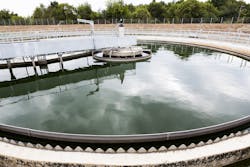Application Corner: A tale of two sewage districts
Did you ever prepare for a big event only to have the wind taken out of your sails before the event began? That is exactly what happened my first time testifying in court, but it is a long story that started about three or four decades ago. It is my understanding that some of the technical issues presented in the early years still remain unresolved and, if so, will likely remain unresolved until the existing contract expires and a new contract is negotiated.
This particular case involved a dispute regarding billing for the sewage generated in one sewage district that was subsequently treated in a sewage treatment plant located in and operated by a second sewage district that is adjacent to the first district. More specifically, this was a case involving measurements obtained from four flowmeters that deliver sewage from the first sewage district to the second sewage district, plus the measurement from a flowmeter that measures the total flow entering the water treatment plant. The total population of the two districts was approximately 10,000 people, so such issues that will be discussed could occur almost anywhere.
The first district’s system was designed to collect raw sewage, whereas the second district was a combined sewage system that transported not only raw sewage but also drainage water that included water gathered during wet weather events. As a side note, drainage water collected from street drains and the like could have been routed to a river without treatment if a separate drainage water piping system had been installed in the second district.
Read more next month about how the sewage flows generated by each sewage district are measured.
David W. Spitzer is a principal at Spitzer and Boyes, LLC, which offers engineering, focused market research, writing/editing white papers, strategic marketing consulting, distribution consulting, seminars and expert witness services for manufacturing and automation companies. Spitzer has written more than 400 technical articles and 10 books about flow measurement, instrumentation and process control. He can be reached at 845-623-1830 or via spitzerandboyes.com.
David W. Spitzer
David W Spitzer’s new book Global Warming (aka Climate Change): An Understandable Data-Driven Explanation and Pathway to Mitigation (Amazon.com) adds to his over 500 technical articles and 10 books on flow measurement, instrumentation, process control and variable speed drives. David offers consulting services and keynote speeches, writes/edits white papers, presents seminars, and provides expert witness services at Spitzer and Boyes LLC (spitzerandboyes.com or +1.845.623.1830).


